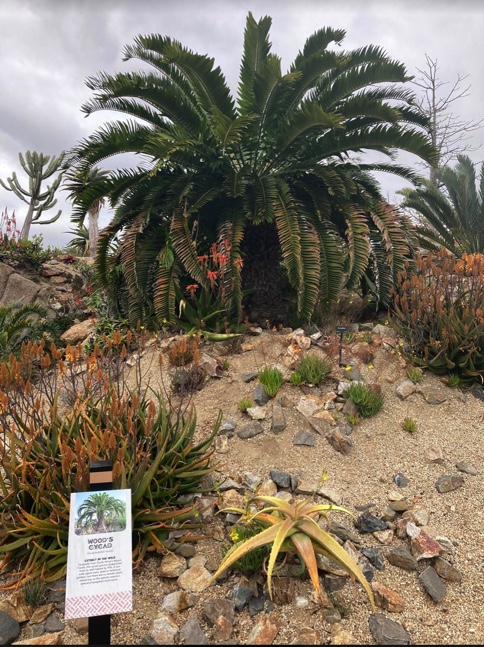Adam Graves: Some History on Balboa Park and its Trees. Part 1
In February, Adam Graves, director of the Horticulture Department of the San Diego Zoo and previous manager of the browse program and of the zoo’s team of arborists over the past five years, was our featured speaker. Graves received his B.S. in Biology at UCSD and his master’s at Miami University. He also volunteered at our Natural History Museum; he managed a small sustainable farm for a San Diego non-profit; he did horticultural consulting for the global ARC community garden; and he volunteered at Wild Willow Sustainable Farm. Graves is particularly fond of carnivorous plants as well as bamboo and Australian trees. He believes that the Zoo’s plants should receive equal billing to the animals’. He shared with us what the horticultural portion of the zoo does, how the zoo does this, and how this work factors into public conservation.
Balboa Park dates back to 1915 after San Diego won the right to host the Panama Exposition. It had over two million plants and over 1,200 varieties. To attract more visitors to the Exposition, exotic animals were rented from a local company that supplied them. After the Exposition ended, the rental company no longer wanted the elephants, lions or tigers. Thus, they were left on Park Boulevard, unclaimed because no one wanted poop detail. As Harry Wegeforth was driving on 6th Avenue, he heard a lion roar. Immediately deciding that the Park needed a zoo, Wegeforth created the Zoological Society in 1916. Five years later he secured a parcel of land for the zoo.
Meanwhile the animals spent those five years on Park Boulevard, fed by local donations and farmers’ forage. The chaparral, which covered the land, was removed to create Wegeforth’s dream of “a capacious sylvan zoo with a luxuriant growth of trees and forest.” Graves asserts that Wegeforth was successful in creating a “shining jewel.” Harry Wegeforth, used his cane to dig a hole into which he would plant a tree. . . eucalyptus, acacia or pepper. Nowadays, the zoo would select a slightly different plant palette, but at the time these trees were exotic and appropriate for the climate and soil.
Today the zoo has over 700,000 individual plants with more than “13,000 prominent specimens representing over 3,100 species.” At the Safari park there are over 1.3 million specimens. The zoo has a staff of more than 40 consisting of horticulturists, arborists, propagators, a plant registrar, browse staff, and collection experts. The four greenhouses include two for orchids (warm/cool), one for propagations, and a fourth for carnivorous plants.
The zoo also has a micropropagation lab for conservation work with exceptional endangered species. In addition, the Safari Park has a seed bank just for Southern California natives. The teams also care for all the plants with the exception of those inside the animals’ areas. They may enter some enclosures occasionally; others they enter only when the animals will not be disturbed by the noise of a saw. Generally, they take care of plants in enclosures when they are accessible. The newer areas of the Zoo, such as the Children’s Zoo, are trying to coordinate as much as is practical the landscape to the area from where the animals come. These areas have some of the rarest plants in the world, collected not just for beauty, but for conservation, too.
The Children’s Zoo is being redone from the ground up, “matching plant palette to animal palette.” It will have four areas: Desert Dunes, Wild Woods, Rain Forest, and Marsh Meadows. The hummingbirds’ aviary is also here. These New World birds are matched with New World epiphytes and New World pollinator plants. Developing this section taught Graves more about hummingbirds than he ever wanted to know as the research was exhaustive. He learned that hummingbirds favor red, orange and warm colored flowers and that this is a learned behavior. It is useful because insects don’t notice these colors, leaving more nectar for the hummers. Some orchids evolved with hummingbirds. For example, since the orchid’s pollen color matches that of a bird’s beak, “he’s less likely to scrape it off.”
Africa Rocks, a new part of the zoo, has several examples of plants kept for conservation. From Madagascar we have the rare Albany Cycad and Wood’s Cycad plus the odd Madagascar Mousetrap Plant whose prickly seedpods have spikes, which attach to mice and other small mammals thus spreading its seed. The Elephant tree (Operculicarya decaryi) and the Alluaudia comosa are also vulnerable.
Another portion of the zoo, Tiger River, represents Asia. Here we find two kinds of bamboo that grow 60-80 feet tall with a ten-inch diameter. Other plants you will see are Asian Cycads, Burmese honeysuckle, and what Graves refers to as “the saddest part of the zoo”: weeping mulberry, weeping cypress, weeping juniper, and weeping willow. Special Chinese mountain bamboo grows here to represent a favorite food of the panda.
To learn more about the zoo, call to book a tour with the horticultural department. They have many talented tour-givers on staff. You will learn a great deal.
In June part 2 will give more information about the current activities of the horticultural side of the zoo. Meanwhile, from 6 to 8 p.m., Thursday, May 27 Connor Leone will present ECOLIFE: Aquaponics, a Part of the Sustainable Agriculture Program. Go to missionhillgardenclub.orgto register, as an RSVP is required to receive Zoom coordinates.

Category: Animals, Business, Donations, Education, Entertainment, Gardening, Historical, Local News, Nonprofit







